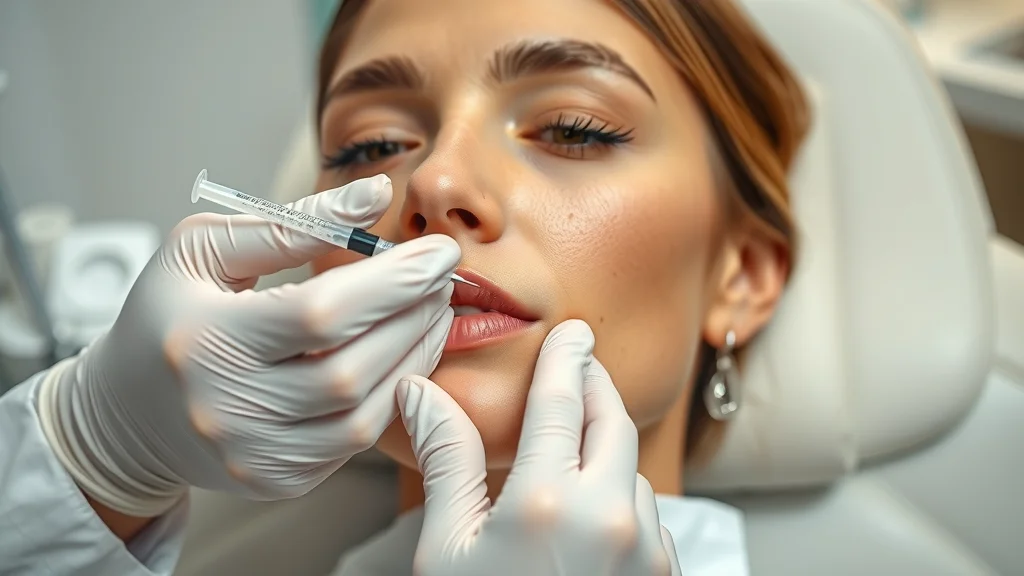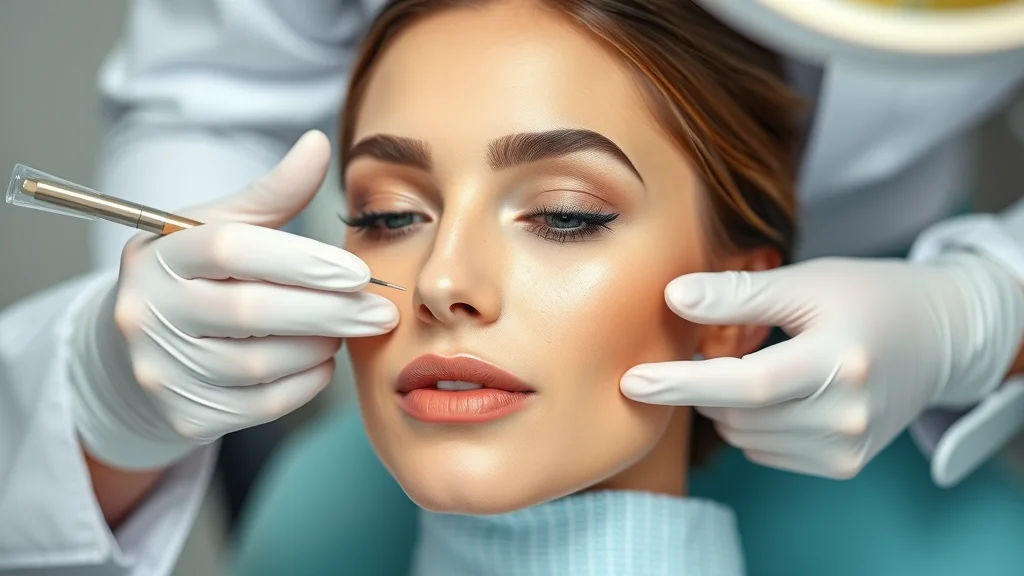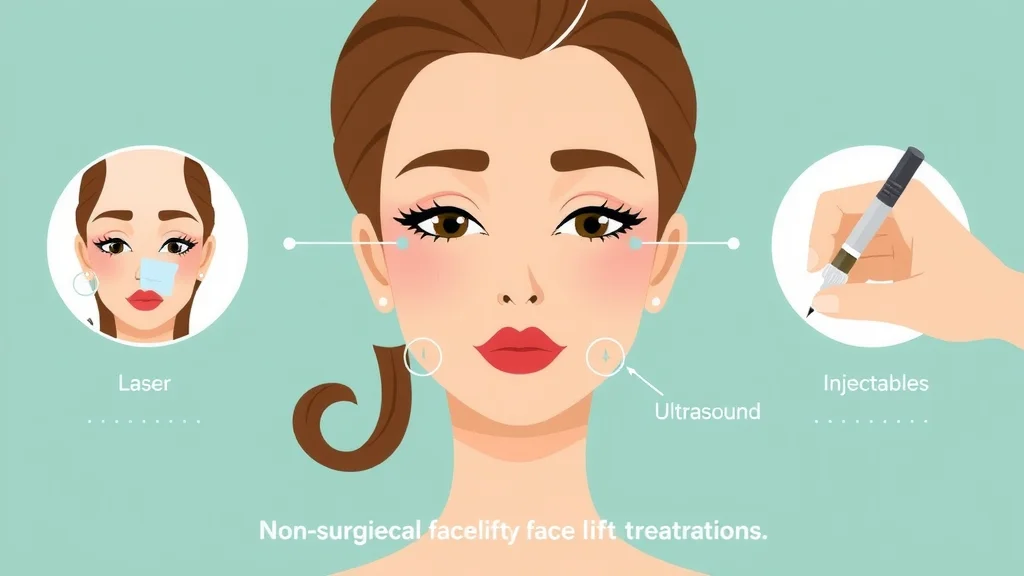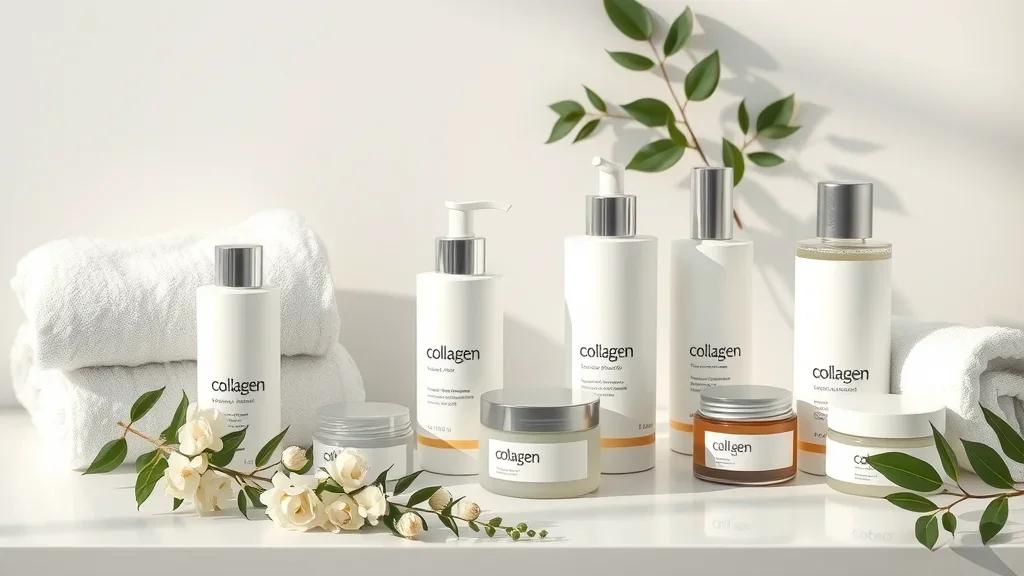Did you know non-surgical facelift treatments have soared by more than 40% in the last five years—now surpassing surgical procedures? If you’re seeking a firmer, more youthful appearance without the risks and downtime of surgery, you’re not alone. Advances in non-surgical facial rejuvenation technology are transforming the way people lift and refresh their skin, making dramatic results accessible, safer, and more convenient than ever before. In this comprehensive guide, you’ll uncover why non-surgical facelifts are in such high demand, how they compare to surgical options, and exactly which modern treatments deliver the most dramatic real-world results.
Why Demand for Non-Surgical Facelift Treatments is Surging
A Surprising Shift: Non-Surgical Facelift Treatments Outpace Surgical Facelifts

The desire for facial rejuvenation and skin tightening is nothing new—but how we achieve it has rapidly evolved. In recent years, more people are turning to non-surgical facelift treatments for a variety of reasons: lower risk, less downtime, and impressive technological advancements. Unlike the traditional surgical facelift, which requires anesthesia, incisions, and a lengthy recovery, non-surgical options leverage new science-driven therapies that are minimally invasive and deliver natural-looking results. Modern patients—across a broad age range—are especially drawn to the convenience and subtlety of procedures that smooth fine lines, tighten loose skin, and enhance their appearance with little disruption to normal activities.
As awareness of these non-invasive and minimally invasive options grows, so does consumer trust in their effectiveness. More plastic surgeons and facial experts now recommend combining treatments such as lasers, ultrasound, and injectables to achieve the ideal blend of skin tightening and facial rejuvenation. The data is clear: While surgical facelifts still have a role, non-surgical facelifts now lead the charge, with millions of procedures performed globally each year. This speaks not just to advances in technology, but to shifting attitudes about aging gracefully—and safely—without going under the knife.

Did you know that non-surgical facelift treatments have increased by over 40% in the last five years, surpassing surgical facelift procedures? This article uncovers the science, benefits, and options behind this trend.
What You'll Learn About Non-Surgical Facelift Treatments
Key differences between surgical facelift and non-surgical facelift treatments
Emerging nonsurgical facelift techniques and technologies
Cost, effectiveness, and recovery associated with top non-surgical treatments
How to choose the right skin tightening treatment for your unique needs
Non-Surgical Facelift Treatments vs Surgical Facelift: Key Differences
How Non-Surgical Facelift Treatments Differ from Surgical Facelifts
Invasiveness and downtime
Expected results and longevity
Risks and safety considerations
Role of a plastic surgeon and facial plastic expertise
"Innovations in non-surgical facelift treatments have revolutionized facial rejuvenation—patients no longer need to endure long recoveries to achieve younger, firmer skin."
– Renowned Facial Plastic Surgeon

The major distinction between non-surgical facelift treatments and traditional surgical facelifts centers on invasiveness. While a surgical facelift is a surgical procedure that tightens underlying facial muscles, removes excess skin, and usually requires weeks of recovery, non-surgical methods use energy-based modalities, injectables, and skin resurfacing for more gradual but effective improvements. Surgical procedures are ideal for severe signs of aging, but they carry higher risks, longer downtime, and a more significant price tag.
Non-surgical options—including laser treatments, ultrasound skin tightening, and advanced injectables—focus on stimulating collagen production, restoring volume, and smoothing fine lines. They generally involve less risk, fewer potential side effects, and reduced recovery compared to invasive treatments. While the results may not be as dramatic or permanent as a full facelift procedure, for many, the trade-off is well worth it—especially with consistent maintenance and a personalized approach from a qualified plastic surgeon or facial plastic specialist.
How Non-Surgical Facelift Treatments Work for Skin Tightening
Understanding Skin Tightening and Facial Rejuvenation Technology
Noninvasive skin tightening treatments explained
Facial skin tightening vs traditional surgical facelifts
Role of collagen and elastin in nonsurgical facelifts

At the core of non-surgical facelift treatments is the ability to stimulate your body’s own natural renewal processes—especially collagen production—which is key to maintaining firm, youthful skin. Noninvasive skin-tightening treatments use energy (such as light, heat, or ultrasound) to target the deeper layers of skin without breaking its surface. This controlled stimulation triggers neocollagenesis, prompting your cells to remodel loose skin and repair age-related damage, shrinking sagging skin and reducing the look of fine lines.
While traditional surgical facelifts physically tighten and lift tissues, non-surgical methods work more subtly—restoring lost elasticity and smoothness gradually over weeks and months, with results that can last from months up to several years depending on the modality. Combining techniques—for example, pairing laser treatment with targeted dermal fillers—further enhances firmness and contour. Though outcomes are naturally less dramatic than a surgical procedure, today’s nonsurgical facelifts provide impressive rejuvenation, often with minimal downtime and minimal risk.
Top Non-Surgical Facelift Treatments: Comprehensive Overview
Laser Treatments and Laser Skin Resurfacing
"Laser treatments are a cornerstone of nonsurgical facial rejuvenation, offering impressive results with minimal downtime."
– Leading Dermatologist
Laser treatments, including fractional laser skin resurfacing, harness focused light to stimulate collagen, evaporate surface damage, and induce overall tightening of the skin. These procedures are highly customizable, targeting specific areas of the face that need improvement—such as fine lines, hyperpigmentation, or acne scarring—without harming surrounding tissues. Modern fractional lasers allow patients to return to normal activities quickly, making them a safe and effective option for those seeking facial rejuvenation with minimal downtime. By encouraging new skin growth and greater elasticity, lasers offer a significant jump in the effectiveness of non-surgical facelift treatments compared to older methods.
Patients often experience visible improvement after just one session, with cumulative benefits as treatments progress. However, mild redness and temporary sensitivity can occur as common side effects. Overall, this technology fills the gap between basic skincare and more invasive facelift procedures, especially when performed by an experienced facial plastic or plastic surgeon. If you desire smoother, clearer skin without invasive treatment, laser treatments are well worth exploring.
Ultrasound Skin Tightening Treatments

Ultrasound technologies, such as Ultherapy, use focused sound waves to heat deep layers of facial tissue. This tightening treatment causes the skin to contract and stimulates new collagen and elastin—core building blocks of youthful skin. Unlike lasers, which often target the surface, ultrasound reaches deeper foundations without damaging the outer skin. The result? Gradual but natural-looking improvements in firmness, definition, and skin elasticity—especially in challenging areas like the jawline and neck, where loose skin commonly occurs.
The benefits of ultrasound skin tightening include safety, minimal invasiveness, and zero need for incisions. Most people can resume regular activities immediately, enjoying subtle improvements over several months as collagen levels increase. This makes ultrasound one of the most reliable non-surgical facelift treatments for those seeking no-downtime solutions to sagging skin. To maximize results, consult a plastic surgeon or facial plastic expert to tailor a protocol for your anatomy and goals.
Radiofrequency (RF) Skin Tightening Treatments
Radiofrequency (RF) energy has become a leading method for skin tightening thanks to devices like Thermage and Profound RF. These treatments use controlled heat energy to deeply stimulate collagen fibers, tightening tissue and enhancing facial contours. RF is unique in its versatility: it can be used on multiple areas of the face (and body) and is safe for most skin types. By delivering targeted warmth below the skin’s surface, RF treatments cause immediate tightening and long-term remodeling of saggy or lax skin, making them indispensable for facial rejuvenation without a surgical procedure.
Unlike surgery or more invasive treatments, radiofrequency sessions require little to no downtime—patients can expect some redness, but normal activities are rarely interrupted. RF treatments can also target other symptoms of aging, such as uneven tone or texture, by promoting healthy cell turnover. For those looking to restore a naturally youthful appearance with a proven, non-surgical approach, radiofrequency is an excellent addition to your treatment plan, especially when guided by a skilled plastic surgeon or dermatologist.
Injectables: Dermal Fillers and Neurotoxins

Injectables have fundamentally changed the world of facial aesthetics. Dermal fillers use gel-like substances (like hyaluronic acid) to restore lost facial volume, smooth wrinkles, and create lift in key areas—without any incisions. Neurotoxins such as Botox temporarily relax facial muscles that contribute to dynamic wrinkles, producing a smoother complexion for several months. These treatments are highly customizable; a skilled provider can enhance cheekbones, fill hollows, or lift brows to mimic the effects of a mini facelift procedure.
The major appeal of injectables is the instant transformation with almost no downtime. With proper technique, side effects are minimal—commonly limited to mild swelling or bruising. Plus, these treatments can be combined with other skin tightening treatments, such as lasers or ultrasound, for compounded results that rival minor surgical facelifts. Consulting a facial plastic or plastic surgeon is critical for natural, safe outcomes.
Chemical Peels and Advanced Exfoliation
Chemical peels are time-tested treatments that use controlled acids to remove damaged surface layers, revealing brighter, firmer skin beneath. By clearing away old cells and stimulating collagen renewal, peels address fine lines, sun damage, and uneven texture—important features for facial rejuvenation without surgery. Advanced exfoliation, including enzyme and combination peels, now allows even sensitive skin types to benefit from these effects, with less risk and variable downtime depending on peel strength.
While not technically skin tightening treatments, peels improve firmness, clarity, and smoothness, and can be included as part of a complete non-surgical facelift approach. Modern formulas are tailored by plastic surgeons or skincare professionals based on individual needs, providing a customizable alternative to traditional facelift procedures.
Microfocused Ultrasound and New Technologies
Microfocused ultrasound and emerging technologies like microneedling radiofrequency devices (Morpheus8, Profound RF) represent the cutting edge of non-surgical facelift treatments. These modalities use precise energy or micro-injuries to activate robust collagen and elastin production at various depths of the skin, firming tissues with near-surgical precision and minimal invasiveness. Results gradually emerge over weeks as new fibers knit together, offering lasting improvement in texture and tone.
These innovations empower providers to address a wide range of aging signs, from mild laxity to deep wrinkles, with unparalleled accuracy. As with all advanced skin tightening treatments, optimal results depend on the expertise of your facial plastic or plastic surgeon, your skin type, and your long-term goals.
Method |
How it Works |
Approx. Cost |
Longevity |
Best For |
Downtime |
|---|---|---|---|---|---|
Laser Skin Resurfacing |
Uses fractional laser to stimulate collagen and remove surface damage |
$800–$3,500 |
1 to 3 years |
Fine lines, sun damage, uneven texture |
2–7 days |
Ultrasound (Ultherapy) |
Targets deep tissue with sound waves to induce skin tightening |
$2,000–$4,500 |
1–2 years |
Jawline, neck, mild sagging |
0–2 days |
Radiofrequency (RF) |
Uses heat to contract collagen fibers and remodel tissue |
$1,000–$5,000 |
6–18 months |
Full face, mild-moderate laxity |
0–3 days |
Injectable Fillers |
Restores volume and smooths deep lines |
$600–$2,500 |
6–18 months |
Volume loss, cheeks, lips |
0–2 days |
Chemical Peels |
Removes dead skin, stimulates renewal |
$300–$1,500 |
3–12 months |
Fine lines, surface texture |
0–7 days |
Microfocused Ultrasound |
Delivers precise heat for collagen boost |
$2,500–$5,000 |
1–2 years |
Deep tissue tightening |
0–2 days |
How to Choose the Best Non-Surgical Facelift Treatment for Your Needs
Consulting with a qualified plastic surgeon
Assessing individual skin type and goals
Considering nonsurgical facelifts for natural-looking results
Factors like plastic surgery history and recovery tolerance
Choosing the right non-surgical facelift treatment begins with a personalized assessment from a board-certified plastic surgeon or facial plastic specialist. This expert will consider your skin type, degree of sagging, age, and specific goals when recommending an optimal protocol. Think carefully about your comfort with downtime, your desire for subtle versus dramatic improvements, and any previous history of plastic surgery or invasive procedures. If you seek natural-looking rejuvenation without scars or extended recovery, minimally invasive options like RF energy, ultrasound, or combined modalities could be your best fit.
Your unique desires should guide your decision. For some, a single treatment—like injectables for volume loss—delivers satisfying improvement; others may benefit from a combination plan (such as laser resurfacing plus chemical peels) that builds on the power of multiple modalities. Consulting with a trusted professional is the most important step to ensure safety, efficacy, and long-lasting results geared to your vision for facial rejuvenation.
People Also Ask: Non-Surgical Facelift Treatments
What is the most effective non-surgical facelift?
The most effective non-surgical facelift treatments often include a combination of technologies such as ultrasound skin tightening, radiofrequency, and injectables. Effectiveness varies based on individual anatomy and goals.
How much does a non-surgical facelift cost?
Non-surgical facelift treatments typically range from $500 to $5,000, depending on the type of procedure, provider experience, and geographic location. Consult a facial plastic surgeon for precise cost estimates.
What's the best alternative to a facelift?
Popular alternatives include laser treatments, skin tightening treatments using ultrasound or RF technology, and injectable fillers designed for facial rejuvenation without surgery.
Do non-surgical face lifts actually work?
Yes, non-surgical facelift treatments are clinically proven to provide skin tightening and facial rejuvenation, though results are typically more subtle and temporary compared to surgical facelifts.

FAQs About Non-Surgical Facelift Treatments
Are non-surgical facelift treatments safe for all skin types?
Yes, most non-surgical facelift treatments—including laser, RF, and injectables—can be safely tailored to a variety of skin types and tones, though it’s critical to work with a provider experienced in diverse cases.How long do results from non-surgical facelift treatments last?
Results range from several months (injectables and peels) up to two years or more (RF, ultrasound). Longevity depends on the treatment, your age, skin health, and maintenance plan.Can I combine nonsurgical facelift methods for better results?
Absolutely—combining treatments such as lasers, RF, and injectables can address multiple aging concerns at once and often produces synergistic, natural-looking facial rejuvenation.What side effects can I expect from popular skin tightening treatments?
Side effects are usually mild: temporary redness, swelling, sensitivity, or minor bruising. These typically resolve within days and are much less intense than surgical side effects.Do I need a plastic surgeon consultation for non-surgical options?
A consultation with a board-certified facial plastic or plastic surgeon is highly recommended, ensuring your treatment is safe, appropriate, and targeted to your unique needs and goals.
Key Takeaways: Non-Surgical Facelift Treatments
Non-surgical facelift treatments are effective for many seeking facial rejuvenation
Multiple options exist, from laser treatments to injectables
Always seek a reputable facial plastic or plastic surgeon for best outcomes
Ready to Rejuvenate? Schedule a Consultation for Non-Surgical Facelift Treatments Today
Discover which non-surgical facelift treatment is best for you—schedule a consultation with a top plastic surgeon or facial rejuvenation expert and start your journey to firmer, more radiant skin.
Conclusion: With today’s non-surgical facelift treatments, you can achieve impressive facial rejuvenation while minimizing risk, downtime, and hassle—contact a specialist to explore which options will help you look and feel your very best.
 Add Row
Add Row  Add
Add 




Write A Comment